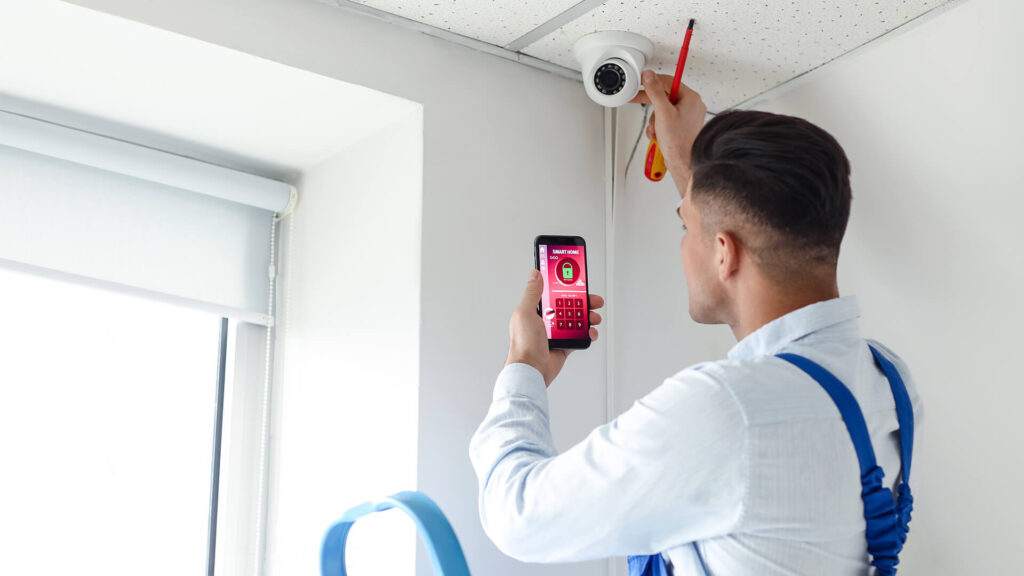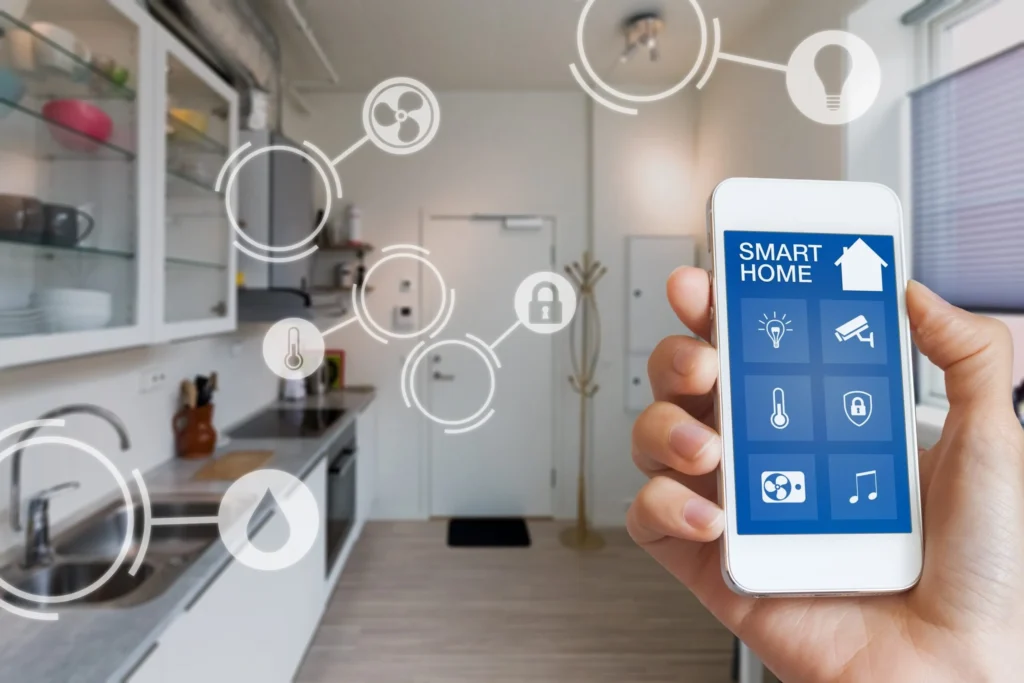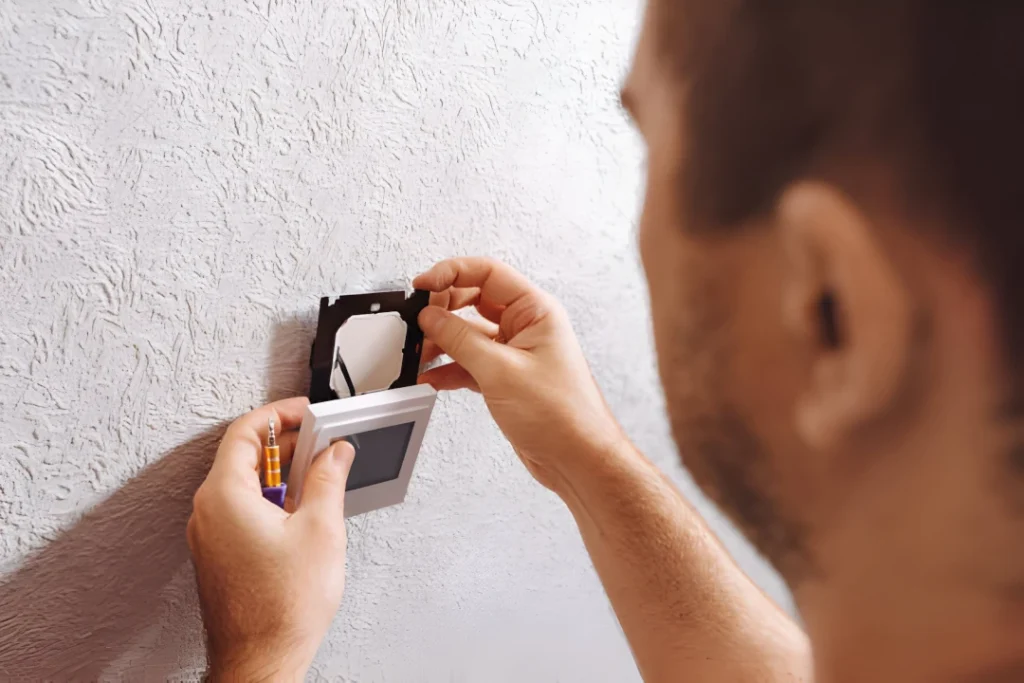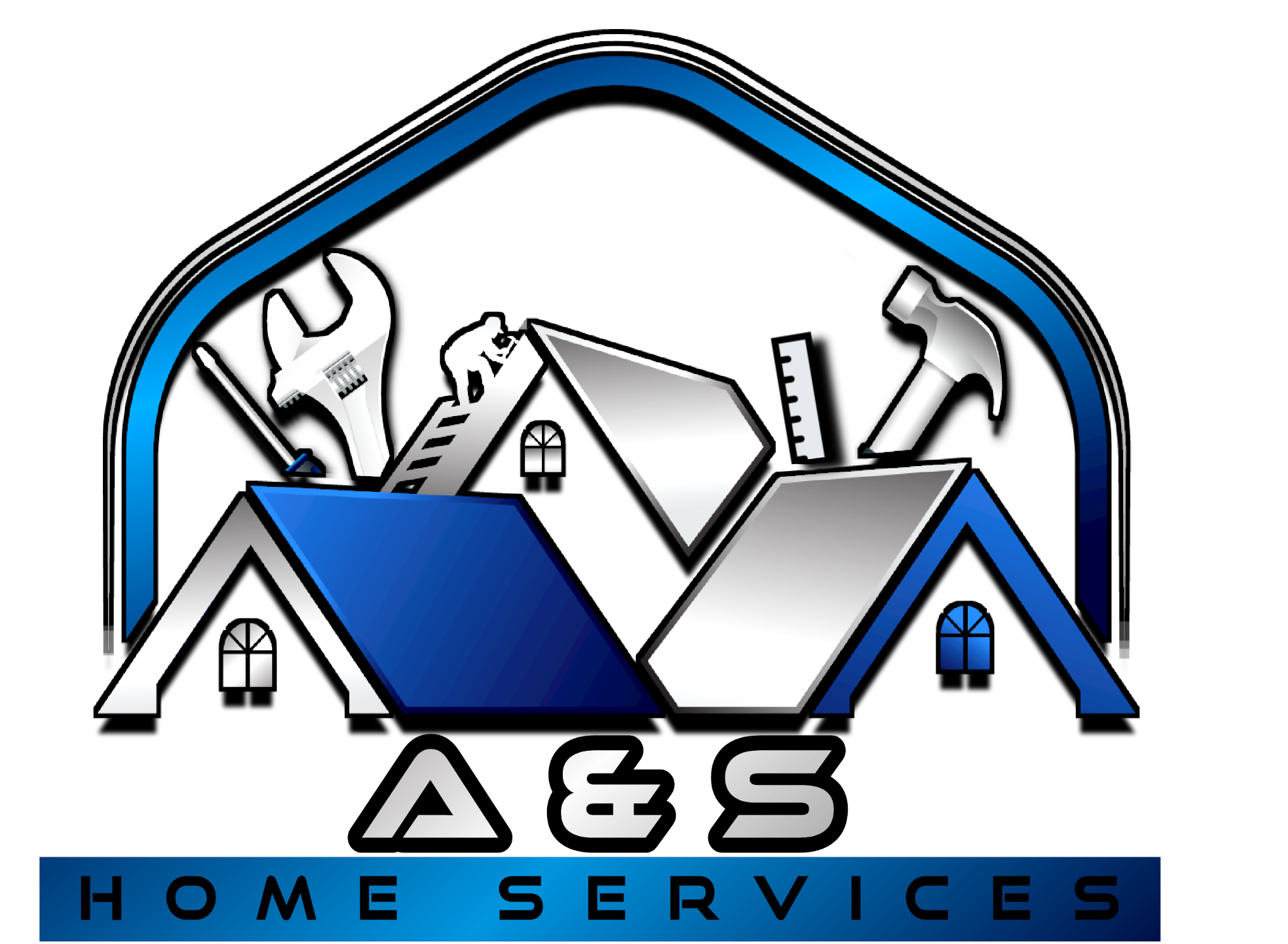Smart Home Installations in Latham NY: What to DIY and When to Hire a Handyman

You bought your first home in Latham. You want smart features that save energy, boost security, and protect against water damage. You also want to avoid mistakes that cost time and money. This guide shows exactly what you can install yourself and when to bring in help for safe, clean results. Many projects are simple. Some are not. Your goal is a reliable setup that works every day, in every season. If you want expert handyman Latham NY help on day one, A&S Home Services is a trusted local option.
Smart devices are common now. Over half of U.S. households own at least one smart device. The most popular include smart thermostats, cameras, doorbells, locks, and water sensors. Latham homes vary by age and wiring type. That matters. You need to match your plan to your home. Use the sections below to choose DIY or pro support with confidence.
Quick answer: Which smart installs are safe to DIY?
Short list for most first-time Latham homeowners.
- Smart locks. Often DIY in under 45 minutes if your door is aligned and you have a standard deadbolt.
- Battery video doorbells. Usually DIY if your Wi-Fi is strong at the door.
- Plug-in or battery security cameras. DIY if you do not run new wires.
- Water leak sensors. DIY in minutes. Whole-home shutoff is usually pro work.
- Smart thermostats. DIY if you have a C-wire and standard HVAC. Call a pro for heat pumps, multi-zone, or high-voltage systems.
Smart device difficulty and install needs

| Device | DIY Difficulty | Typical DIY Time | Needs New Wiring | Common Risks | Typical Pro Labor in Latham |
|---|---|---|---|---|---|
| Smart Thermostat | Medium | 45 to 90 minutes | Sometimes | Wrong wiring. No C-wire. Heat pump settings. | $120 to $250 |
| Security Cameras, Wired | Medium to Hard | 60 to 180 minutes each | Often | Drilling into siding. Unsafe ladder use. Exposed cables. | $150 to $300 per camera |
| Security Cameras, Battery or Plug-in | Easy | 20 to 45 minutes each | No | Weak Wi-Fi signal. Poor angle or lighting. | $80 to $150 per camera |
| Video Doorbell, Battery | Easy | 30 to 45 minutes | No | Wi-Fi dead zone. Mounting on uneven surface. | $80 to $140 |
| Video Doorbell, Wired | Medium | 45 to 90 minutes | Uses existing | Low transformer voltage. Chime compatibility. | $120 to $220 |
| Smart Lock | Easy | 20 to 45 minutes | No | Misaligned strike plate. Door not square. | $80 to $160 |
| Water Sensors | Easy | 10 to 20 minutes each | No | Missed leak zones. Battery neglect. | $60 to $120 for multi-sensor placement |
| Smart Shutoff Valve | Hard | 60 to 180 minutes | Often | Leaks. Corroded main valve. Pipe damage. | $200 to $450 |
Labor ranges reflect typical local pricing and scope. Add device cost and parts.
handyman Latham NY: When should you call for smart home installs?
- You need to add outlets, low-voltage lines, or fish wires through walls or attics.
- Your thermostat lacks a C-wire or you have heat pump, multi-stage, or high-voltage systems.
- Your door sticks or the lock bore is not standard. Doors with mortise hardware need extra skill.
- Your doorbell transformer is under 16V, or the chime requires rewiring.
- You must use a tall ladder for soffit cameras or second-story installs.
- Stucco, brick, or vinyl siding drilling is required and you want clean weatherproof seals.
- You want PoE cameras, NVR storage, or VLANs for security.
- You want a whole-home water shutoff on copper or PEX with no leaks.
For more on preventing storm and freeze damage in Upstate homes, see this guide on storm proofing Upstate NY homes.
What are the real costs in Latham for DIY vs pro?
Use this value view. Count both money and risk.
| Factor | DIY | Pro Install |
|---|---|---|
| Out of Pocket | Device cost. Tools if needed. Small parts. | Device cost plus labor. Often includes parts and sealants. |
| Typical Labor Cost | $0. Your time. | $95 to $135 per hour locally. Flat rates common for simple jobs. |
| Time to Complete | 1 to 3 hours per device for first-time users. | 30 to 90 minutes per device on average. |
| Risk of Damage | Medium for wiring or drilling. Low for battery devices. | Low. Insured work. Proper tools and bits. |
| Reliability | Varies. Miswires and weak Wi-Fi are common. | High. Tested before handoff. Cleaner cable runs. |
| Warranty and Support | Device warranties may not cover install issues. | Workmanship warranty. Clear documentation. |
| Resale Value | Neutral to positive if clean and documented. | Positive. Buyers like pro-installed systems. |
Tip. If you will buy tools you will rarely use, pro labor can be cheaper overall.
Can you install a smart thermostat yourself?

Often yes. Check your wiring first. Look for a C-wire. Confirm your HVAC type in the app before you remove anything. Standard single-stage systems are good DIY candidates.
Smart thermostat quick checklist
- Tools. Screwdriver, small level, drill with small bit, wire labels, voltage tester, phone.
- Install time. 45 to 90 minutes.
- Safety. Turn off power to the furnace or air handler at the breaker. Confirm no power with a tester.
DIY steps at a glance
- Take a photo of the old thermostat wiring.
- Label each wire. R, W, Y, G, C are common.
- Mount the base level. Use wall anchors if needed.
- Connect wires to the new base. Tug gently to confirm secure connections.
- Restore power. Follow app prompts to set system type and Wi-Fi.
Hire a pro when
- No C-wire and you do not want to use a power extender.
- You have a heat pump, dual fuel, multi-stage, or boiler with zone valves.
- You see 120 or 240 volt baseboard heat. That is not the same as 24 volt HVAC.
- You need to run new cable to the furnace board.
Can you install security cameras yourself?
Yes if they are battery or plug-in cameras. Wired cameras or PoE systems add complexity. Exterior drilling and ladder work add risk.
Security camera quick checklist
- Tools. Drill with masonry or wood bits, ladder, level, screws and anchors, cable clips, sealant.
- Install time. 20 to 45 minutes per battery camera. 60 to 180 minutes per wired camera.
- Safety. Use a safe ladder angle. Avoid overhead wires. Seal exterior holes to prevent leaks.
DIY steps at a glance
- Plan camera views. Cover entries and high-traffic areas.
- Test Wi-Fi signal at the mount location with your phone.
- Mount brackets. Leave drip loops on cables.
- Pair in the app. Adjust motion zones to reduce false alerts.
Hire a pro when
- You want clean concealed wiring.
- You need attic or soffit runs.
- You want PoE with a switch, NVR, or network segmentation.
- You need exterior outlets, conduit, or junction boxes.
Outdoor installs should follow weatherproofing best practices. Upstate storms, ice, and wind test mounts and sealants. Review this local guide on storm proofing to plan for harsh seasons.
Can you install a video doorbell yourself?
Yes for battery doorbells. Wired doorbells are still doable if you have an existing chime and proper transformer voltage.
Video doorbell quick checklist
- Tools. Screwdriver, drill, level, voltage tester, wedge kit if needed.
- Install time. 30 to 90 minutes depending on wiring.
- Safety. Turn off power to the doorbell transformer at the breaker. Verify no voltage.
DIY steps at a glance
- Check transformer rating. Most require 16 to 24 VAC and at least 10 VA.
- Mount the plate. Use a wedge for better view on side walls.
- Connect wires or insert battery. Pair in the app.
- Configure motion zones. Test the chime.
Hire a pro when
- Your transformer is undersized. It gets hot or the chime buzzes.
- You have no existing doorbell wiring and need a new run.
- Your exterior is brick or stucco and you want clean anchors and seals.
Can you install a smart lock yourself?
Yes if you have a standard deadbolt and a square door. Many locks are designed for easy swaps.
Smart lock quick checklist
- Tools. Phillips screwdriver, tape measure, optional chisel, drill for strike plate.
- Install time. 20 to 45 minutes.
- Safety. Keep the door open while installing. Test with the door open first.
DIY steps at a glance
- Remove existing deadbolt. Note backset and hole size.
- Install new latch and keypad. Keep it level.
- Align the strike plate. Reinforce with 3 inch screws for security.
- Pair with app. Set users and auto lock settings.
Hire a pro when
- The latch binds or the door rubs the frame.
- You have a mortise or integrated handle set.
- You need to bore new holes or work on a metal door.
Can you install water sensors or a smart shutoff yourself?
Yes for basic sensors. Whole-home shutoff valves are usually pro work. Water can cause major damage in a short time. Aim for reliability over experimentation.
Water protection quick checklist
- Tools for sensors. None or screwdriver. For shutoff valve. Adjustable wrench, Teflon tape, bucket, towels.
- Install time. 10 to 20 minutes per sensor. 60 to 180 minutes for shutoff valve.
- Safety. Turn off the main water before valve work. Check for leaks at all joints.
DIY steps for sensors
- Place sensors near water heater, sinks, toilets, laundry, and sump.
- Use rope-style or probe sensors in tight spaces.
- Enable low temperature alerts to prevent freeze damage.
Hire a pro when
- Your main valve is corroded or stuck.
- You need to cut copper or modify PEX.
- You want automatic shutoff with power backup and Wi-Fi.
Protecting your home from leaks increases long-term value. Learn how to make smart upgrades count in this piece on maximizing value with local handyman services.
Q&A. How strong does my Wi-Fi need to be?
For stable cameras and doorbells aim for at least 2 to 3 bars where the device sits. An RSSI better than minus 65 dBm is a good target. Many cameras use 2.4 GHz only. If pairing fails, separate your 2.4 GHz SSID, pause band steering, then pair again.
Q&A. What if my doorbell transformer is too weak?
Upgrade to a 16 to 24 VAC transformer rated for at least 10 to 30 VA depending on the doorbell. Place it on a junction box. Turn off power, test with a multimeter, then wire per label. If you are unsure, call a handyman Latham NY to avoid short circuits or code issues.
Q&A. Will a smart thermostat work with my system?
Check the brand compatibility tool. Most work with single-stage gas or electric systems. Heat pumps, boilers with zones, or dual fuel require correct settings. A C-wire is essential for reliable power. If you do not have one, use a power kit or have a new wire pulled to the air handler.
Q&A. How do I mount cameras without water leaks?
Use the right bit for siding or masonry. Add silicone behind the mount and around the screw heads. Add a drip loop before the cable enters the house. Use UV rated cable clips. This keeps water from wicking indoors and prevents wind damage.
Troubleshooting. Quick fixes that solve most problems
- App cannot find device. Enable Bluetooth and location on your phone. Reboot the phone and router. Power cycle the device.
- Device will not join Wi-Fi. Confirm 2.4 GHz SSID name and password. Move the router closer. Add a mesh node.
- Doorbell not ringing. Check transformer voltage. Check chime type setting in the app. Verify diode if required.
- Thermostat dead. Close the furnace panel door. Many systems have a door switch that cuts power.
- Camera offline in rain or cold. Seal connections. Use weatherproof junctions. Replace swollen batteries.
- Lock binds. Adjust strike plate. Add a small shim. Lube the latch with a dry PTFE spray.
Seasonal and safety checks for Upstate NY homes
- Winter. Test water sensors near pipes that run along exterior walls. Enable low temp alerts. Keep smart lock batteries fresh in cold weather.
- Spring. Inspect exterior camera mounts and seals after freeze cycles. Tighten loose screws.
- Summer. Heat can reduce battery life. Provide shade where possible. Check attic camera cable runs for heat stress.
- Fall. Clean doorbell and camera lenses after pollen and dust. Test sump pump sensors before heavy rain.
- All year. Surge protection for routers, NVRs, and hubs. Keep firmware updated. Maintain strong passwords and two-factor authentication.
Decision checklist. DIY or hire for your exact home
- Wiring. Do you have existing low-voltage wiring in good shape. If not, hire.
- Power. Can you safely shut off and verify circuits. If not, hire.
- Access. Will you need ladders, attic crawling, or exterior drilling. If yes, hire.
- Time. Can you spare 2 to 3 hours per device this week. If not, hire.
- Tools. Do you have a drill, level, proper bits, tester, and sealant. If not, hire.
- Complexity. Heat pump thermostat, PoE cameras, or shutoff valve. Hire.
- Finish quality. Do you want concealed wires and sealed penetrations. Hire.
- Warranty. Do you want documented install for resale. Hire.
Local tips for Latham homes
- Older homes may have mixed wiring. Label everything before you disconnect.
- Vinyl siding needs proper spacers for doorbells and cameras. Avoid crushing.
- Brick and block walls need masonry anchors and silicone to prevent water entry.
- Basements can block Wi-Fi. Use a mesh node near the stairs or utility room.
- Place water sensors by the water heater and laundry. These two areas cause most claims.
Q&A. What order should you install devices?
Follow this order to reduce issues.
- Upgrade Wi-Fi or add mesh if needed.
- Install smart thermostat to stabilize comfort and power schedules.
- Install water sensors and optional shutoff for protection.
- Install video doorbell and smart lock for entry control.
- Install security cameras and fine tune detection zones.
Q&A. How can you protect your investment long term?
- Document passwords, device serials, and locations.
- Use surge protection on networking gear and hubs.
- Schedule quarterly checks for batteries, lenses, and firmware.
- Enable alerts for offline devices so you know when something fails.
- Use unique logins for each family member to track access.
- Consider a maintenance visit. A local pro can service seals, mounts, and settings before winter.
Real world scenarios. DIY or pro?
- Scenario 1. 1960s ranch with new furnace and one thermostat. You have a C-wire. DIY the smart thermostat. Hire for soffit camera wiring.
- Scenario 2. Townhome with HOA limits on exterior drilling. DIY battery doorbell and cameras. Avoid drilling without approval.
- Scenario 3. New build with Cat6 home runs and PoE switch. Hire for PoE cameras and NVR. DIY the smart locks and sensors.
- Scenario 4. Older shutoff valve with green corrosion. Hire for smart shutoff valve. DIY leak sensors at fixtures.
Q&A. What about privacy and data?
- Change default passwords. Use two-factor authentication.
- Disable audio recording on exterior cameras if you do not need it.
- Use local storage NVR for cameras if you prefer not to use cloud.
- Review app permissions. Limit access to needed features.
Q&A. Do smart devices lower bills?
Thermostats can cut heating and cooling costs by 8 to 12 percent with schedules and setbacks. Water leak alerts can prevent thousands in damage. Battery cameras and doorbells add security at a low monthly cost. Savings depend on how you use the features.
Pro tip table. Device-specific pitfalls and fixes
| Device | Common Pitfall | Quick Fix |
|---|---|---|
| Thermostat | No power after install | Close furnace panel door. Confirm R and C are seated. Check breaker. |
| Doorbell | Random chime or no chime | Upgrade transformer. Set chime type in app. Check diode if required. |
| Camera | False motion alerts | Use person detection. Reduce sensitivity. Set zones. |
| Smart lock | Auto lock closes on open door | Enable door sensor. Add delay. Calibrate. |
| Water sensors | No alerts on real leaks | Test monthly. Place on the floor, not on mats. Replace batteries on schedule. |
When timeline matters. Fast installs you can do today
- 30 minutes. Battery doorbell. One battery camera. One water sensor pack.
- 60 minutes. Smart lock plus doorbell.
- 90 minutes. Smart thermostat with existing C-wire.
- Half day. Four battery cameras with mounts and zones dialed in.
- Full day. Mixed system with wired runs. Best handled by a handyman Latham NY if you want clean results.
FAQ
Do I need a hub?
Many devices work on Wi-Fi alone. Hubs add reliability and local control. Consider a hub if you want routines that work when the internet is down.
Which platform should I choose?
Choose one primary platform. Alexa, Google, or Apple. Make sure your devices are Matter or platform compatible to reduce app hopping.
Can I take devices with me if I move?
Yes for locks, thermostats, and cameras. Restore factory settings before you list the home. Leave wiring neat and safe.
What internet speed do I need?
Most cameras use 1 to 2 Mbps per stream at 1080p. Doorbells need less. A 200 Mbps plan is plenty for a typical home.
How do I back up footage?
Use an NVR for PoE cameras. Add SD cards where supported. Cloud plans add offsite storage for theft and fire scenarios.
Will winter cold affect batteries?
Yes. Cold reduces capacity. Keep spares charged. Consider wired power or solar panels for key cameras.
What if my breaker panel is labeled poorly?
Map it. Turn off one breaker at a time and label rooms. This saves time and improves safety for all future work.
Your next step
Start with the easy wins. Install a smart lock, a battery doorbell, and a few leak sensors. Upgrade Wi-Fi if you see weak spots. Plan wiring and exterior work with a pro. Clean installs protect siding and framing. Good wiring improves reliability and keeps alerts consistent. If you want a trusted local team to handle the tricky parts, book A&S Home Services for a fast, safe setup. For complex projects or tight timelines, reach out to a handyman Latham NY so your smart home works right on day one.

